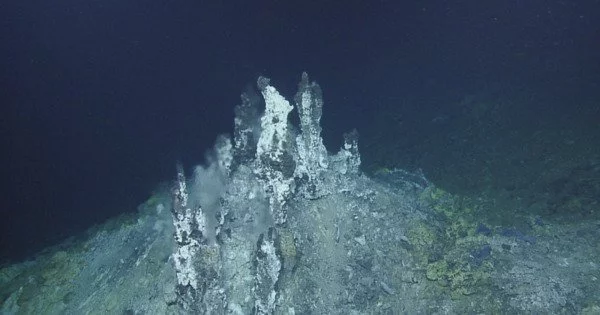Deep-sea black carbon is a type of carbonaceous material that is found in the sediments of the deep ocean. While it is true that hydrothermal vents can contribute to the formation of black carbon, they are not the only source.
Black carbon is formed through the incomplete combustion of organic matter. This can happen naturally through wildfires and volcanic eruptions, or as a result of human activities such as burning fossil fuels. When black carbon is transported to the ocean, it can accumulate in the sediment, where it becomes buried over time.
Hydrothermal vents have been discovered as a previously unknown source of dissolved black carbon in the oceans, adding to our understanding of the oceans’ role as a carbon sink. The ocean is one of the world’s largest dynamic carbon sinks, and it is vulnerable to increased carbon emissions from human activities. There are even plans to use the ocean to sequester carbon in order to reduce greenhouse gas emissions. However, many of the processes by which the ocean functions as a carbon sink remain unknown.
Associate Professor Youhei Yamashita and grad student Yutaro Mori at Hokkaido University, along with Professor Hiroshi Ogawa at AORI, The University of Tokyo, have revealed conclusive evidence that hydrothermal vents are a previously unknown source of dissolved black carbon in the deep ocean. Their discoveries were published in the journal Science Advances.
One of the largest carbon pools on the Earth’s surface is dissolved organic carbon in the ocean. We were interested in a portion of this pool known as dissolved black carbon (DBC), which cannot be used by organisms.
Professor Hiroshi Ogawa
“One of the largest carbon pools on the Earth’s surface is dissolved organic carbon in the ocean,” explains Ogawa. “We were interested in a portion of this pool known as dissolved black carbon (DBC), which cannot be used by organisms. The source of DBC in the deep sea was unknown, though hydrothermal vents were suspected.”
The researchers examined the distribution of DBC in the ocean basins of the North Pacific Ocean and the Eastern South Pacific Ocean, and compared the results to previously reported concentrations of a helium isotope associated with hydrothermal vent emissions, as well as oxygen utilization in these areas.
Their findings showed that hydrothermal vents were an important source of DBC in the Pacific Ocean. This hydrothermal DBC is most likely formed due to the mixing of the hot fluids from hydrothermal vents with cold seawater, and is transported over long distances – up to thousands of kilometers away.

“Most importantly, our research indicates that the DBC from hydrothermal vents is an important source of dissolved organic carbon in the deep ocean. In terms of DBC inputs to the ocean, hydrothermal vents may contribute up to half as much DBC as that which is formed by biomass burning or fossil fuel combustion and subsequently transported via rivers or atmospheric deposition,” concluded Yamashita. Further research is required to understand exactly how DBC is formed from hydrothermal vents.
Hydrothermal vents can also contribute to the formation of black carbon in the deep ocean. These vents release hot, mineral-rich fluids into the ocean, which can react with organic matter in the surrounding sediments to form black carbon. However, the contribution of hydrothermal vents to the overall amount of black carbon in the deep ocean is not well understood and is an area of ongoing research.
In summary, while hydrothermal vents can contribute to the formation of deep-sea black carbon, they are not the only source. Other sources include natural wildfires and volcanic eruptions, as well as human activities such as burning fossil fuels.















